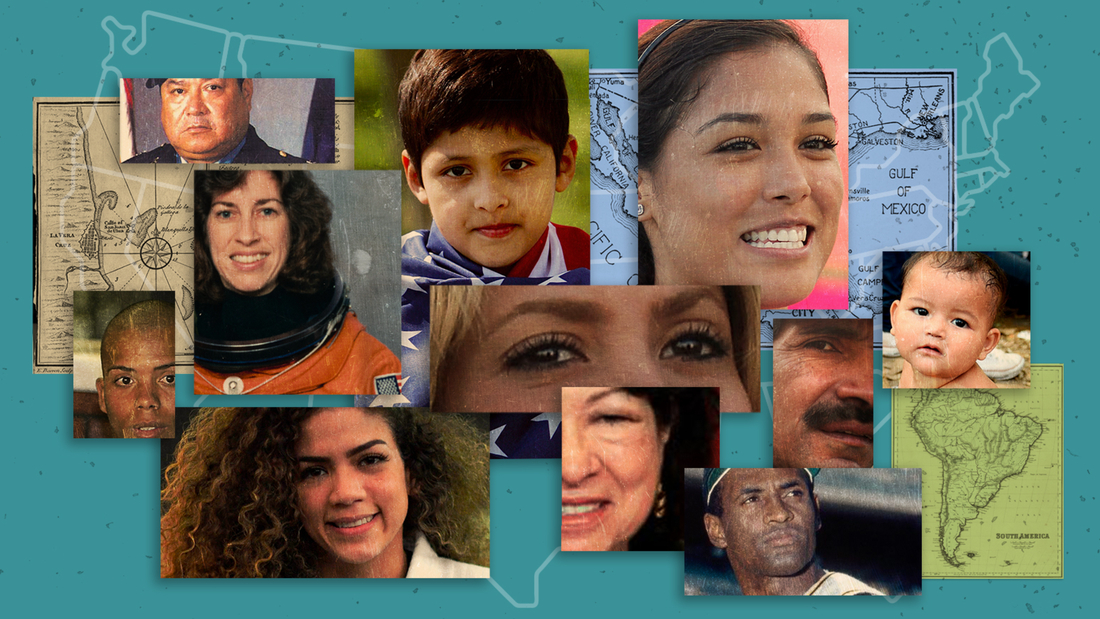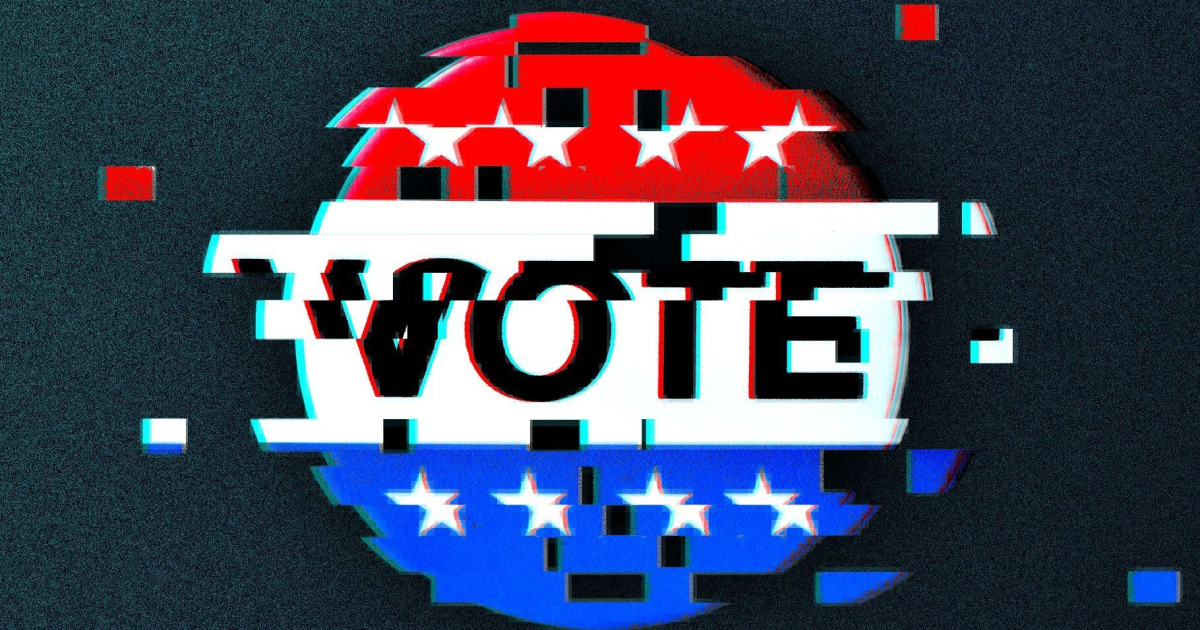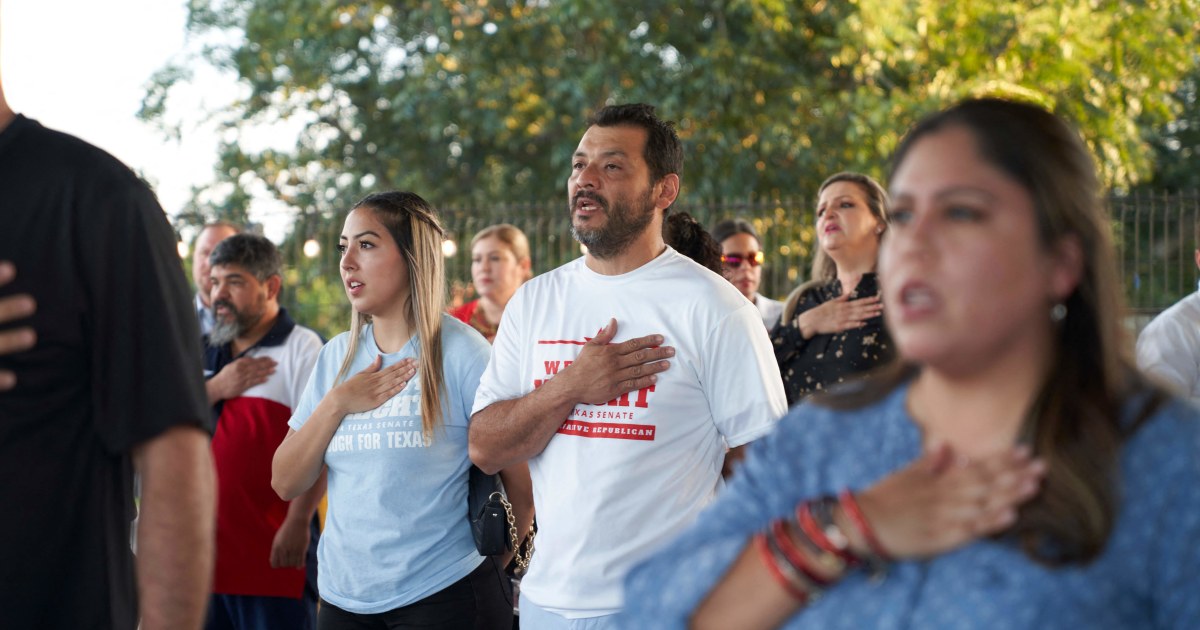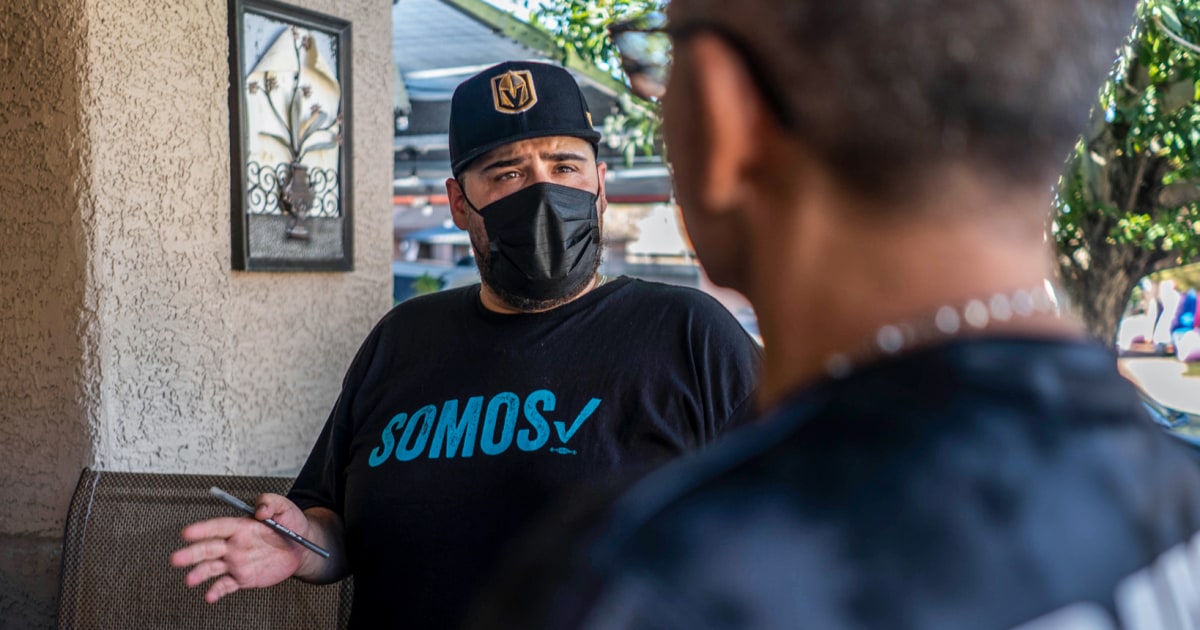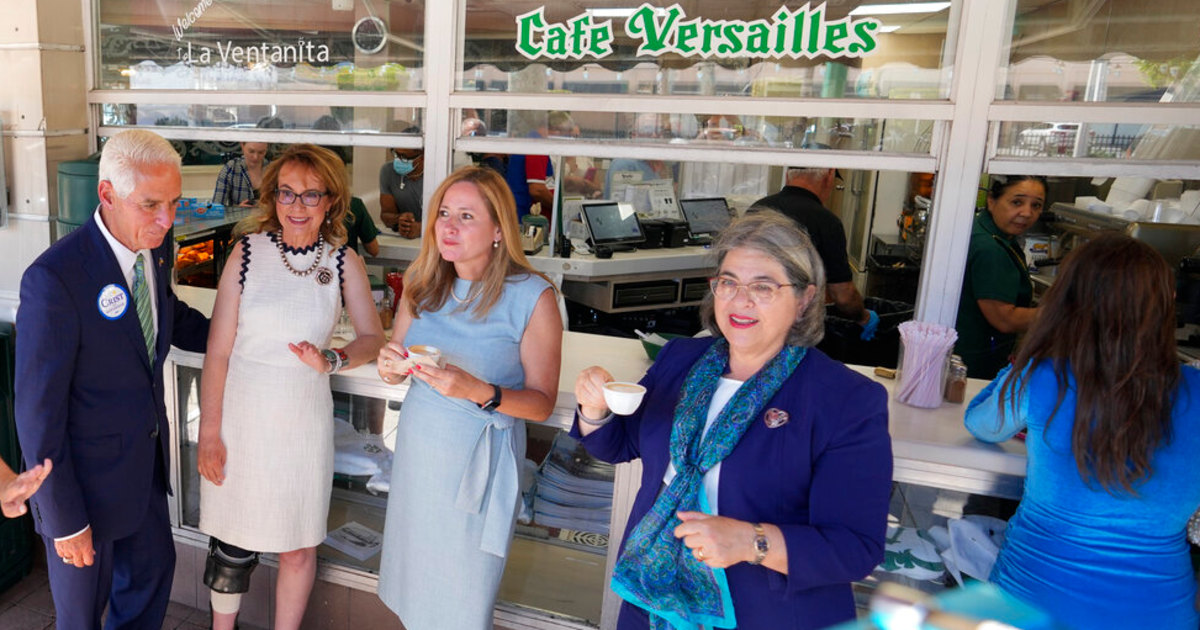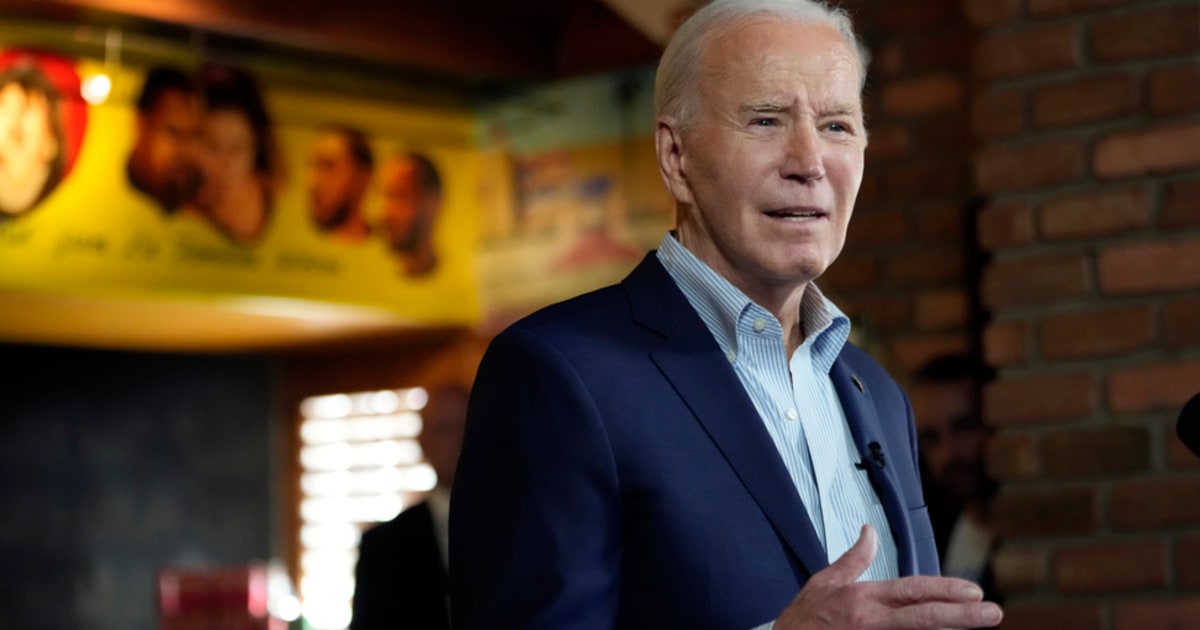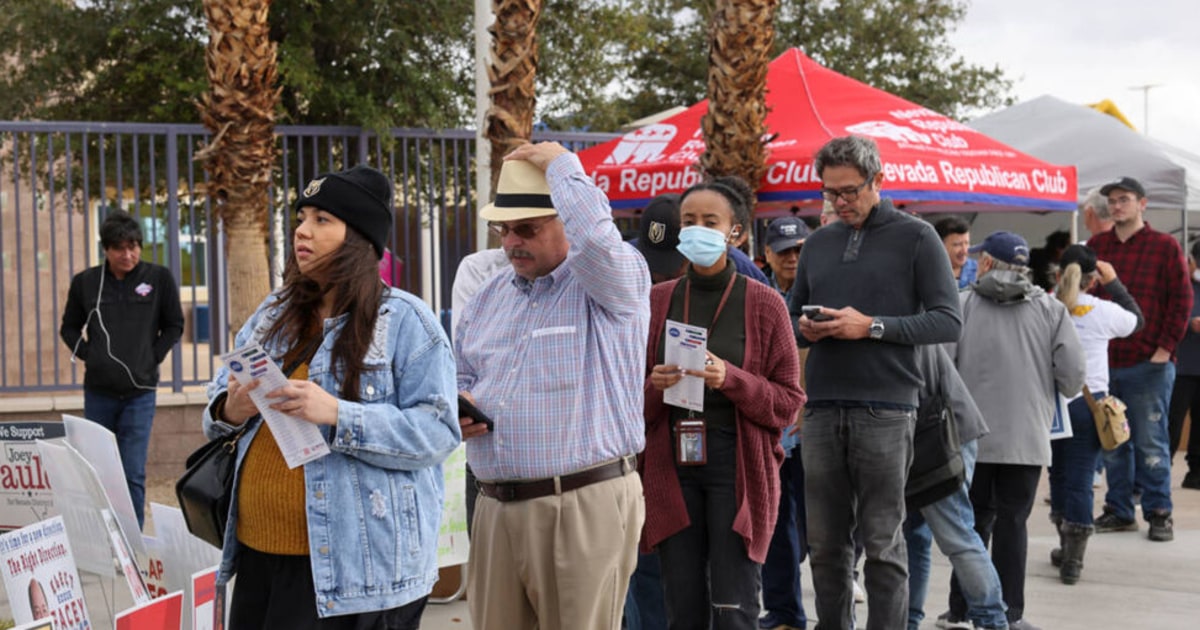CNN journalists speak of responsibility as Hispanics 4:55
(CNN) -
James Bosquez grew up being singled out by his cousins for speaking only English and provoking surprised looks from his classmates for not getting good grades in Spanish class.
The 39-year-old comedian says those reactions used to upset him when he was young, but he learned that not speaking the language didn't make him any less Latino.
Bosquez represents the complexity of Latinos, a diverse group whose presence in the United States predates the country's current borders.
"We've been across the Rio Grande since my great-grandmother emigrated (from Reynosa, Mexico), so we're going about four or five generations," said Bosquez, who now lives in Portland.
The way Latinos self-identify, vote, and speak varies greatly.
They are often the target of anti-immigrant ridicule and face economic, health and educational disparities.
During the covid-19 pandemic, they have experienced higher infection rates, as well as pay cuts and job losses.
advertising
America's Hispanic and Latino communities are far from being a monolith.
The knowledge of this Hispanic led him to Secretary of Health 2:28
Your ancestors come from more than a dozen countries
There are 62 million people in the US whose ancestors or ancestors come from Mexico, parts of the Caribbean, Central and South America, as well as Spain, according to US Census data.
In the 1970s, the federal government adapted the term "Hispanic" to describe this group, but a 2019 Pew Research survey found that half of US Latinos most often describe themselves by the country of origin or the inheritance of your family.
OPINION |
Hispanics are transforming America's demographics, and the U.S. is transforming them
Although the proportion of Latinos of Mexican descent is considerably large, with more than 37 million people, there are more than a dozen other groups of origin.
Puerto Ricans, Dominicans, Salvadorans, and Guatemalans are some of the largest groups.
Hispanics and Latinos are reshaping states across the country
The Latino or Hispanic population currently represents about 19% of the United States population.
Its size is the result of decades of constant growth.
In the last decade, the total Hispanic population grew 23% nationwide.
In California, the group officially became the largest racial or ethnic group in the state for the first time, according to 2020 census data. The group represents 39.4% of Californians, an increase from 37.6% of 2010. The non-Hispanic white population in California was 34.7%, in 2020.
Although there are large concentrations of Latinos in the Southwest, there are rapidly growing Latino communities in the Midwest, along the East Coast, and in the South.
North Dakota, Louisiana, South Dakota, Tennessee and Vermont have seen the highest Hispanic population growth since 2010 compared to other states, according to a CNN analysis of census data.
In North Dakota, the Hispanic population saw a 148% increase, something that experts say was in part the result of the state's oil and construction industry.
CNN journalists speak of responsibility as Hispanics 4:55
Kevin Iverson, a demographer with the North Dakota Department of Commerce, said the Bakken oil boom drew thousands of workers, including many Latinos, to the state in the last decade.
Latinos are overwhelmingly represented in the mining, transportation and construction industries, Iverson says, and appear to be second- or third-generation Americans.
They represent up to 5% of the state's workforce, a number that has grown in the past 20 years from zero, he said.
They are younger than the average American population
When you think of Latinos, you think of youth.
At least a third of US Latinos are under the age of 18 and 41% are between the ages of 18 and 44, according to Census data.
The Hispanic population has the youngest median age - 29.8 years - of any major racial or ethnic group in the country.
The median age of non-Hispanic whites is 43.7 years old, and the median age of non-Hispanic blacks is 34.6 years old, according to data from the 2019 American Community Survey.
Ana González-Barrera, principal investigator at the Pew Research Center focusing on Hispanics, demographics and immigration, said that the majority of young Latinos were born in the United States and are more multi-ethnic and multiracial.
"A lot of people, when they think of Hispanics, they think of immigrants and Spanish-speakers, but young Hispanics, for the most part, speak English," González-Barrera said, adding that there are more US-born Latinos than those who come from abroad.
Latino youth are more likely to be more educated, fluent in English, and have more opportunities compared to older Latinos, González-Barrera said.
Historically, college enrollment among non-Latino white students has been higher than any other demographic in the United States, but Latino students have made huge inroads in part because of their youth.
Between 2000 and 2018, the number of Latino students increased from 1.4 million to 3.4 million, the fastest growth of all racial and ethnic groups, according to the National Center for Education Statistics.
During the covid-19 pandemic, some Latino students have been forced to decide between staying in school or working to help their families survive the economic downturn, leading to declining enrollment and retention, according to Excellence in Education, a national organization focused on accelerating the success of Latino students in higher education.
Hispanics are a complex and powerful electoral bloc
Latinos are a complex and diverse constituency with influencing power in key elections, and their support varies in different parts of the country.
Hispanics and Latinos were especially influential in the last presidential election, in which turnout increased in five swing states from former President Donald Trump in 2016 to President Joe Biden in 2020. However, strong Hispanic turnout also it helped Trump keep Florida and Texas, where counties with large Hispanic populations voted Republican in historically high numbers.
In California, Latinos are estimated to represent 30% of all eligible voters, a significant portion that can easily make or break the success of any Democratic politician.
Earlier this month, a mix of campaigns, super PACs and organizations from both parties worked for weeks to attract Latino voters to the elections to overturn the term of California Governor Gavin Newsom.
Hispanics in the US buy more homes than any other group 1:01
"You can't win in California without reaching Latinos, so from the beginning there was an effort to connect with Latinos and Latino leaders to emphasize how important revocation was," Angélica Salas, director of the Fund, told CNN at the time. de Acción CHIRLA, an immigrant rights organization that worked against the revocation of Newsom's mandate.
Advocates and experts said Latino voters played an important role in defeating the effort to impeach Newsom.
Data from the UCLA Latino Policy Initiative shows that a significant number of Latino voters chose no in Orange, Merced and Madera counties, considered traditional Republican strongholds.
They are a rapidly growing group of entrepreneurs
Latinos are creating businesses at a faster rate than the national average.
However, they have difficulties in obtaining external financing.
The number of Latino-owned small businesses has grown 34% in the past 10 years, compared to just 1% for all other small businesses, according to the Stanford Latino Entrepreneurship Initiative (SLEI).
Between 2012 and 2017, the number of Latino small businesses increased in 45 states, according to a SLEI report.
In 2018, there were more than 331,000 Hispanic-owned businesses, which was about 5.8% of all businesses.
They had an estimated $ 455.6 billion in annual sales and had about 3 million employees, according to the Census Bureau's Annual Business Survey.
The COVID-19 pandemic was a severe blow to most small businesses, with those owned by Latinos and other people of color hit the hardest, according to an analysis of the 12 Federal Reserve banks.
Last year, the Federal Reserve conducted a survey of nearly 10,000 small businesses and found that people of color had more trouble getting approved for funding than other applicants.
Only 61% of the surveyed Latino-owned businesses received all the funding they requested through the Federal Check Protection Program, which offered forgivable loans to small businesses to meet payroll and pay for some operating expenses.
Among white-owned businesses, 79% reported having obtained all of what was requested.
Hispanics in the United StatesLatinos in the United States Hispanic Heritage Month tag

